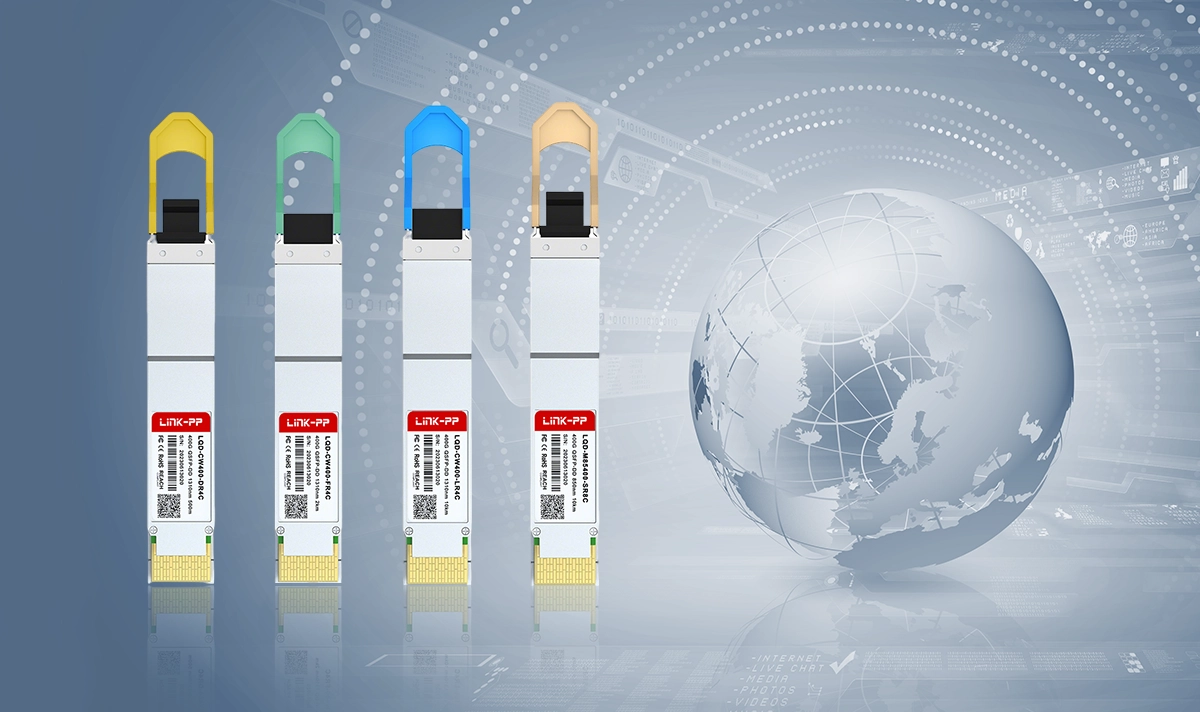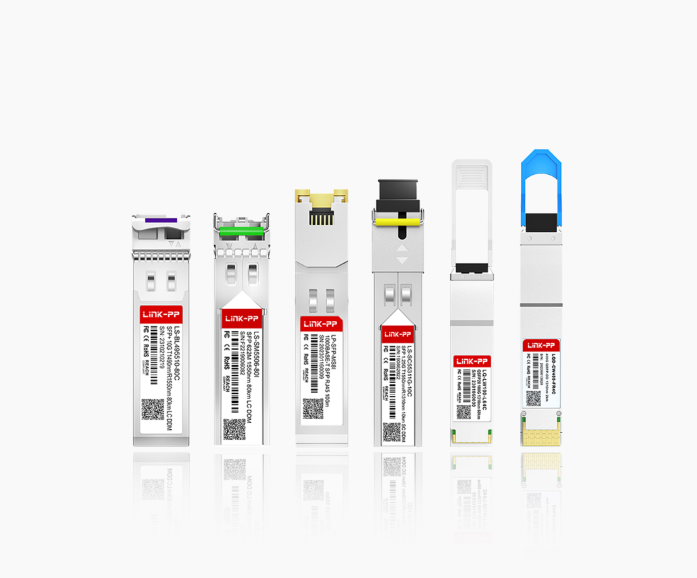
In today's data-driven world, the demand for faster, more reliable optical networks is skyrocketing. Traditional Wavelength Division Multiplexing (WDM) has been a cornerstone of fiber optics, but as bandwidth needs explode, Coherent WDM emerges as a game-changer. This advanced technology combines WDM with coherent detection principles to dramatically increase data capacity, spectral efficiency, and transmission distance. Whether you're in telecom, data centers, or enterprise networking, understanding Coherent WDM is key to leveraging next-gen infrastructure. In this article, we'll explore what Coherent WDM is, how it works, its advantages, and its role in modern systems—including insights into optical transceivers like those from LINK-PP.
By the end, you'll grasp why coherent optical communication is pivotal for scaling networks efficiently. Let's dive in!
📜 Key Takeaways
Coherent WDM can send lots of data fast. It uses amplitude, phase, and polarization to send more information. These travel through optical fibers.
Coherent WDM needs some important parts. It has a stable laser source. It uses a modulator to add data. Optical fibers carry the data. A coherent receiver reads the signals. A digital signal processor (DSP) helps clean up the data.
Coherent detection makes signals clearer. It checks many properties of light. This helps lower noise and signal loss. It works well over long distances.
New signal processing tools help a lot. Silicon photonic transmitters make data rates faster. They use power better. This makes Coherent WDM great for cloud networks and data centers.
Coherent WDM is better than other WDM types. It can carry more data. It reaches farther and fixes errors better. It is the best choice for moving lots of data far away.
📜 What is WDM? A Quick Refresher
Wavelength Division Multiplexing (WDM) is a technique that allows multiple optical signals to be transmitted simultaneously over a single fiber by using different wavelengths (or colors) of light. It’s like a multi-lane highway for data, where each wavelength acts as a separate channel. There are two main types:
Coarse WDM (CWDM): Uses wider wavelength spacing, typically 18–20 channels, ideal for shorter distances.
Dense WDM (DWDM): Employs tighter spacing, supporting up to 80–160 channels, suited for long-haul and metro networks.
While traditional WDM boosts capacity, it relies on direct detection, which has limitations in sensitivity and spectral efficiency. This is where Coherent WDM steps in to overcome these barriers.
📜 What is Coherent WDM?
Coherent WDM integrates coherent detection with WDM, leveraging the phase, amplitude, and polarization of light waves to encode data. Unlike direct detection (which only measures light intensity), coherent systems decode both the intensity and phase information, enabling:
Higher data rates (e.g., 100G, 400G, and beyond)
Improved spectral efficiency (more bits per Hz)
Longer transmission distances with minimal signal degradation
Enhanced resilience to impairments like chromatic dispersion and polarization mode dispersion
In essence, Coherent WDM transforms optical networks by applying digital signal processing (DSP) to "clean" and interpret signals, making it ideal for high-capacity optical networks and long-haul communication systems.
📜 How Coherent WDM Works: The Core Principles
Coherent WDM operates on three key components:
Coherent Transmission: Uses advanced modulation schemes (e.g., QPSK, 16-QAM) to encode data on the light wave's phase and amplitude.
Local Oscillator: A reference laser at the receiver mixes with the incoming signal, allowing precise extraction of phase and amplitude data.
Digital Signal Processing (DSP): Compensates for physical impairments electronically, reducing the need for complex optical components.
This process enables coherent detection to achieve remarkable performance gains. For instance, in DWDM systems, Coherent WDM can support terabit-scale capacities over thousands of kilometers.
📊 Comparison: Traditional vs. Coherent WDM
Feature | Traditional WDM | Coherent WDM |
|---|---|---|
Detection Method | Direct detection | Coherent detection with DSP |
Data Rate per Channel | Up to 10G/40G | 100G to 1.6T and beyond |
Spectral Efficiency | Low (e.g., 0.5–2 b/s/Hz) | High (e.g., 4–8 b/s/Hz) |
Reach | Limited (e.g., <100 km) | Extended (e.g., 1000+ km) |
Cost Efficiency | Lower for short distances | Better for high-capacity/long-haul |
This table highlights why coherent technology is dominating modern upgrades, especially for data center interconnects (DCI) and 5G backhaul networks.
📜 Advantages of Coherent WDM
Adopting Coherent WDM offers numerous benefits, making it a top choice for optical network optimization:
Scalability: Supports exponential growth in data traffic without replacing fiber infrastructure.
Flexibility: Software-defined tuning allows dynamic wavelength allocation.
Cost-Effectiveness: Reduces the need for optical amplifiers and regenerators, lowering operational expenses.
Future-Proofing: Compatible with emerging technologies like elastic optical networks.
These advantages make Coherent WDM essential for applications in telecommunications, cloud services, and IoT, where high-speed data transmission is critical.
📜 Optical Transceivers in Coherent WDM Systems

Optical transceivers are the heart of any WDM system, converting electrical signals to optical ones and vice versa. In Coherent WDM, transceivers integrate DSP chips and coherent components to handle complex modulation. They are critical for achieving high performance in compact form factors.
When selecting transceivers for coherent WDM applications, factors like form factor, power consumption, and compatibility matter. For instance, LINK-PP, a leader in optical solutions, offers robust transceivers designed for coherent systems. One standout model is the CFP2-DCO-400G, which supports 400G rates with high reliability and low latency. This transceiver is ideal for long-haul coherent links and metro network deployments, ensuring seamless integration with existing DWDM infrastructure.
By leveraging LINK-PP transceivers, network operators can enhance their coherent optical performance while maintaining scalability. For high-density setups, LINK-PP also provides options like the QSFP-DD form factor, catering to evolving data center needs.
📜 Applications of Coherent WDM
Coherent WDM is revolutionizing various sectors:
Telecom Networks: Enables high-capacity backbone links for global connectivity.
Data Center Interconnects (DCI): Facilitates fast, reliable data transfer between facilities.
Submarine Cables: Powers undersea communications with extended reach and robustness.
Enterprise and IoT: Supports bandwidth-intensive applications like video streaming and AI.
As coherent WDM technology advances, it paves the way for terabit-era networks, aligning with trends like network virtualization and edge computing.
📜 Conclusion: Embracing the Coherent WDM Future
Coherent WDM represents a significant leap in optical communication, offering unmatched capacity, efficiency, and flexibility. By understanding its principles and benefits, industries can make informed decisions to upgrade their infrastructure. With innovations from brands like LINK-PP, including advanced transceivers such as the CFP2-DCO-400G, implementing Coherent WDM has never been more accessible.
As you plan your network strategy, consider how coherent detection and WDM systems can drive your growth. For more insights on optical transceiver solutions, explore LINK-PP's portfolio to find the right fit for your needs.
📜 FAQ
What makes Coherent WDM different from regular WDM?
You use Coherent WDM to read more parts of the light signal. You check amplitude, phase, and polarization. Regular WDM only checks signal strength. Coherent WDM lets you send more data with better quality.
What is a modulation format in Coherent WDM?
A modulation format is a way you change the light signal to carry data. In Coherent WDM, you use formats like PM-QPSK or PM-16QAM. These formats help you send more information in each signal.
What can you use Coherent WDM for?
You use Coherent WDM for fast data links between data centers. You also use it for cloud networks and long-distance telecom lines. It helps you move lots of data quickly and clearly.
What is the role of a digital signal processor (DSP) in Coherent WDM?
A DSP cleans up your signal. It removes noise and fixes errors. You get a clearer signal, even if it travels far. DSPs help you keep your data safe and strong.




